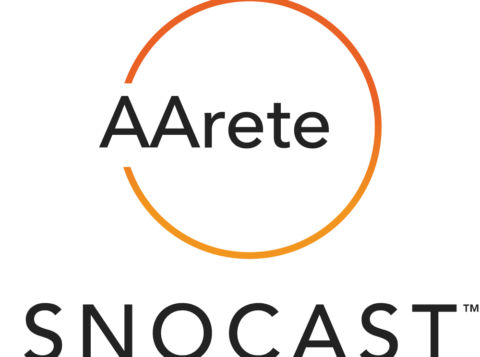Data Disruption and the Future of Data-Driven Procurement – A Guide to Attainable Procurement Innovation
This is an AArete Profitability Improvement insight
Procurement functions have long recognized the importance of data. However, many procurement teams are realizing that their current data strategies no longer provide them with a competitive edge. Today, the focus is increasingly on fully harnessing the vast amounts of procurement data available —spend, contracts, invoices, usage, supplier performance, and more—to maximize value and drive smarter, more impactful decisions.
By implementing new and innovative data strategies and tools, procurement can become a critical force for business growth, drive operational efficiency gains, and strengthen partnerships with both suppliers as well as internal stakeholders.
However, a common question remains: How can procurement teams execute new and innovative strategic data initiatives while managing their demanding day-to-day responsibilities?
5 Proven Ways to Become a Data-Driven Procurement Team:
I. Use the Power of Spend Data to Inform Decision Making and Deliver Cost Savings
Spend data is the cornerstone of procurement—but how is it being utilized and how does it contribute to business growth? Historically, procurement teams used spend data in a static, summarized annual report to monitor year-over-year trends and segment their supplier base. Spend data has rarely been seen as a starting point for innovation or major value-creation initiatives.
AI and tools like ChatGPT can now enable procurement teams to enrich their data to make more informed decisions across the organization. When done properly, enriched data has the potential to identify events that might trigger a “butterfly effect” — for example, if one supplier increases prices by 50%, what ripple effects would that have on other suppliers in the same sector?
Spend data enriched with inventory, itemized invoice, utilization, and supplier information can be compiled into a searchable database, augmented with AI and data visualization tools, and relied upon heavily to support scenario planning and impact assessments. Key solutions include:
- Vendor consolidation
- Tail spend or maverick spend analysis
- Scenario planning
- Price prediction
- Anticipating market impacts
- Streamlining decision-making
- Strengthening stakeholder relationships
- Raw material impact planning
By empowering procurement teams with enriched spend data, organizations can enhance decision-making and expand the strategic impact of their procurement function.
II. Streamline Contracting and Risk Management
Standard practice for procurement has been to review contracts upon renewal or termination and align terms with current company standards. Today, this process has evolved. By capturing contractual metadata in a comprehensive procurement data platform, organizations can streamline the contracting process and better assess risk across lines of business.
Leading organizations are leveraging cutting-edge technologies including customized AI tools to gain a deeper understanding of their contractual obligations, consolidate risk data, and evaluate historical contract language. Key benefits include:
- Tracking compliance with Business Associate Agreements (BAAs), cyber insurance, and indemnity clauses for all suppliers
- Developing alternative contract language to ease the burden on legal teams
- Creating custom contracts and terms based on historical data insights
Contracting remains a critical procurement function. By utilizing historical data, procurement teams can now streamline the process and strengthen contractual outcomes.
III. Automate Invoicing and Enhance Financial Accuracy
Accounts payable (AP) is often an overlooked area within procurement, despite its visibility into the organization’s cash flows. By improving procurement business intelligence, organizations can use AP data strategically to streamline AP processes.
Traditionally manual AP processes such as invoice matching and reconciliation can now be automated. By integrating automated invoice matching tools with contract and purchase order data, procurement teams can reduce overpayments, duplicative payments, and errors. This not only saves time but also significantly reduces unnecessary expenses.
In addition, aligning data strategies across procurement and AP teams can improve working capital. As interest rates fluctuate, procurement teams can swiftly implement strategies that optimize payment terms. Analyzing invoice data can reveal suppliers offering early payment discounts, which can improve cash flow, while identifying suppliers with poor payment terms that may prompt renegotiations.
IV. Innovate Supplier Relationship Management
Data has revolutionized supplier relationship management replacing the era of universally “green” Quarterly Business Reviews (QBRs). Today, real-time supplier performance data—such as on-time delivery rates, product quality, and responsiveness—enables procurement teams to assess supplier effectiveness in a far more dynamic way.
Traditionally, suppliers reported performance data; now, procurement can track it in real-time. This real-time data can support supplier rationalization, enabling organizations to focus on those suppliers that deliver the highest value. By reducing the number of suppliers, procurement teams can negotiate better terms, thanks to higher volumes concentrated with fewer vendors.
Moreover, data empowers procurement to foster strategic partnerships with key suppliers. By collaborating closely with top-performing suppliers, procurement teams can spur innovation, improve quality, and develop cost-effective solutions that benefit both parties. This creates a mutually beneficial partnership that drives long-term value.
V. Enrich Your Procurement Data with Market and Third-Party Data
While internal data is crucial, decision-making in procurement can be significantly enhanced by incorporating external market insights. Enriching internal data with industry trends, commodity price forecasts, and supplier financial health assessments enables procurement teams to make more informed, strategic decisions. Consider the following 2 approaches:
- Market-Based Pricing Strategies: Combining spend data with external pricing trends offers procurement a clearer view of pricing competitiveness. For example, by monitoring real-time commodity prices, procurement teams can determine the best times to lock-in prices or renegotiate supplier contracts, ensuring the organization pays fair prices and capitalizes on favorable market conditions.
- Supplier Market Insights: External data can also provide critical insights into a supplier’s financial health or market position, helping procurement teams assess risks or identify new opportunities for collaboration. This builds a more resilient and competitive supplier base.
Data innovation is accelerating procurement’s ability to evolve from a tactical function into a strategic business partner. By leveraging data for price prediction, scenario planning, supplier rationalization, and cost-saving initiatives, procurement teams can provide valuable insights that nurture broader business goals. Data-driven procurement also fosters stronger collaboration with support functions like finance, operations, and product development.
Data remains the cornerstone of a procurement function and innovation will deliver a modern experience. Effectively utilizing spend, contract, invoice, and supplier performance data, enriched with market intelligence, allows procurement teams to drive cost savings, enhance supplier relationships, and support organizational objectives. For procurement leaders, the takeaway is clear: data should not only drive operational improvements but also elevate procurement’s role in fostering growth, strengthening stakeholder partnerships, and delivering long-term value.
Learn more about AArete’s Profitability Improvement solutions


























































































































